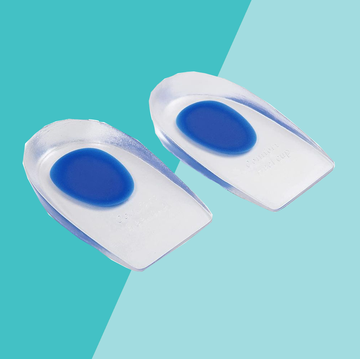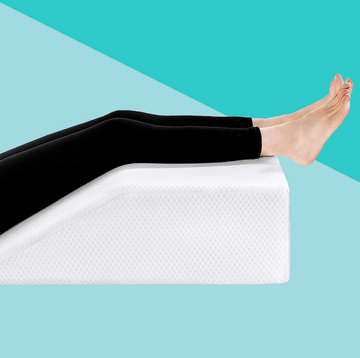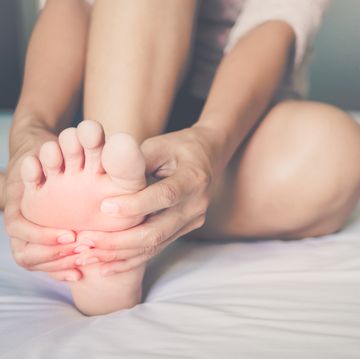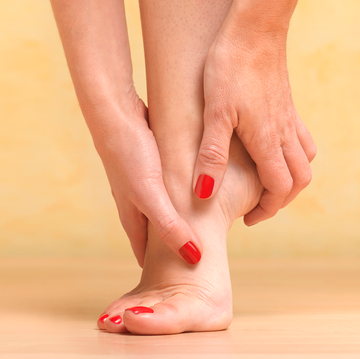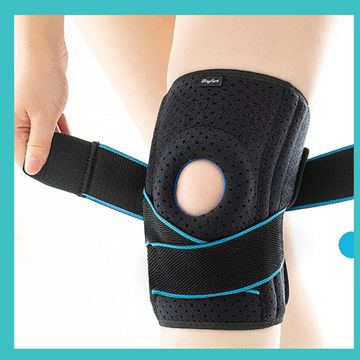After a knee replacement, it can be tempting to take it easy on the exercise front for a while. That's understandable. After all, there's a good chance excessive strain on your knee due to overuse or injury (likely thanks to some kind of exercise) caused you to need a knee replacement in the first place. However, experts agree exercise is a crucial component to healing after a knee replacement.
Of course, there are a few caveats, says Jeffery Geller, MD, an orthopedic surgeon and chief of the division of hip and knee reconstruction at New-York Presbyterian/Columbia Hospital in New York City. "Patients who have had a knee replacement should be aware of their individual limitations," says Geller. "If you've had a knee replacement and a certain exercise is causing knee pain or excessive swelling, limit that particular activity." (Ease aches and pains and get toned from head to toe. Try these yoga routines you can do right at home)
Here, Geller and other top orthopedic surgeons, physical therapists, and other experts share their thoughts on the best exercises to do if you've had a knee replacement, and why they're so important to work into your exercise routine.
Exercise #1: Stationary bike and elliptical machine
These cardiovascular exercises are especially beneficial because they help strengthen the quadriceps muscles, says Geller. This is particularly important after a knee replacement because the quads are essential to movement and stability in the knee. "These exercises are non-impact, which is safer for your knees than high-impact exercises like running," says Geller. Bill Bryan, MD, an orthopedic surgeon at Houston Methodist adds that when he tells patients who've had a knee replacement to use the stationary bike, he recommends that they push down harder on the pedal with the leg that's had the knee replacement. "This will maximize the benefits of this exercise," says Bryan. (When using the elliptical, avoid these 10 most common mistakes.)
Exercise #2: Knee push-downs
For more quad strengthening, try this move: Lie on your back with a towel rolled up and placed under your ankles. Press your knees down toward the floor by tightening the muscles on the front of your thigh (your quads). Hold for five seconds, and repeat 20 times. "This exercise helps you build quad strength, and it also improves knee extension and range of motion," says Kim Pultorak, MPT, manager of physical medicine and rehabilitation at The Joint Center at Grand View Health in Sellersville, Pennsylvania.
Prevention Premium: The Amazing Way One Woman Hiked Her Way To A New Body—And A New Life
Exercise #3: The Clam
Hip strengthening is important after you've had a knee replacement, and it's often overlooked, says Scott Schreiber, a chiropractic physician board-certified in rehabilitation in Newark, Delaware. "Strengthening your hips and glutes is critical for knee stabilization," says Schreiber. To do this move, lie on your side with your knees bent, then lift the knee of your top leg while keeping your feet touching. Repeat three sets of 12 reps on both sides.
Try this 30-second fix for knee pain:
Exercise #4: Heel slides
After a knee replacement, there's a good chance your knee will regularly get stiff. "Bending the affected knee can be painful, but it's something that should be encouraged so that you don't develop scar tissue," says Alice Holland, a doctor of physical therapy and director of Stride Strong Physical Therapy in Portland, Oregon. Stephen Incavo, MD, an orthopedic surgeon at Houston Methodist agrees: "A replaced knee may not have the full range of motion that a healthy knee joint does, and this exercise can help increase that range of motion."
Lie on your back with your non-knee replacement leg straight out in front of you, and bend your other knee, sliding that heel close to your buttocks. Stop when you feel pain, but stay at that angle of knee bending for a second or two before sliding that heel away from your butt. Do three sets of 10 reps, then rest. (You can also try this exercise, called the penguin walk, to ease knee pain.)


